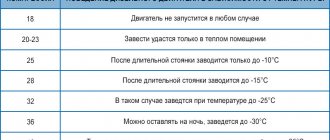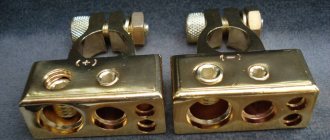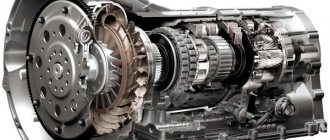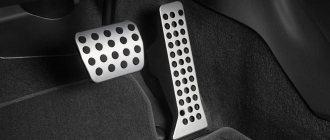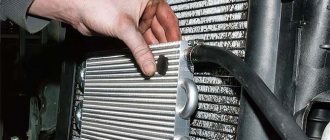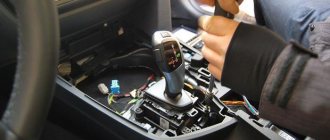Features of multi-disc models
The multi-plate friction clutch includes a wide drum as well as three working plates. Tightening pins are used on linings. Many models have several supports installed. It is also worth noting that there are modifications for two springs. They have high downforce and use large diameter forks. Most often, devices are installed on drives. The housings are used in a conical shape.
Single drum models
Single drum friction clutches are made with one or more plates. The compression force in this case is adjusted with your fingers. Some experts say that the modifications are suitable for cranes. However, they are also found in cars. It is also worth noting that the models can withstand heavy overloads. Their driven discs are polished and can rotate quickly. The power forks are most often installed at the base of the mechanism.
Multi-reel models
Quite often in production there is a safety (friction) clutch with several drums. Among the advantages of the modification, it is worth noting good stops and high downforce. Many models can withstand heavy loads. Mechanisms rarely have linings installed. It is also worth noting that the drive gears used are large. Some couplings operate using tension pins. They have two racks.
In this case, the connection plug is located in the front part of the structure. The devices are not suitable for drives because they have a slow start. It is also worth noting that there are models with a squeezing disc. The rod in this case is located in a horizontal position. In this case, small fingers are used. The devices have high compression force. The drums can only rotate in one direction. The drive disk can be located behind the squeeze plate or in front of it.
Types of couplings
Couplings are used to permanently or periodically connect two coaxial shafts and to transmit rotation from one shaft to another. There are couplings:
- Permanent couplings, used to permanently connect shafts;
- Coupling couplings that connect and disconnect shafts during operation;
- Safety couplings that prevent accidents when loads suddenly increase;
- Overrunning clutches that transmit rotation in only one direction.
Permanent couplings are used in cases where it is necessary to connect two shafts that are not separated during operation of the mechanism. In this case, the shafts can be connected rigidly or using elastic elements.
Coupling couplings are used for periodic connection of shafts, for example, in the drive of the main movement or the feed drive of machine tools. Machine tools often use clutch cam couplings in the form of disks with end teeth-cams and gear couplings. The disadvantage of coupling clutches is that when there are large differences in the rotation speeds of the driven and driving elements, the clutch cannot be turned on.
Friction clutches have the same purpose as cam clutches, but are free from the disadvantages inherent in cam clutches, that is, friction clutches can be activated at any difference in the rotation speeds of its elements. With friction clutches, when overloaded, the driven link can slip and thereby prevent accidents. The presence of several friction surfaces makes it possible to transmit torques at relatively low pressure values on the friction surfaces of the disks.
Bushing models
Bush friction clutches are only suitable for clutch applications. Some modifications are used in drive devices. Models may use several partitions. It is also worth noting that the tension pins are installed above the release spring. The plates are in a horizontal position. The bushing is attached between the partitions and plays the role of a shock absorber.
If we talk about the disadvantages, it is worth noting that the models have low downforce. Also, the models are not able to maintain high shaft speeds. The devices are not suitable for drives.
Hinged models
Couplings on hinges are capable of operating in drive devices of different power. The modifications are distinguished by wide partitions and short fingers. The discs are fixed at the base of the plate. Cases are produced in different sizes. The tie pins are located in front of the post. The partitions can be with grooves. It is also worth noting that the strength of the torque depends on the size of the drum. As a rule, it uses a wide wall. At the same time, the edges are sharpened and do not rub against the discs. This was achieved by installing hinges.
Automatic transmission repair
You won't be able to quickly repair an automatic transmission with your own hands. Theoretical knowledge provides the basis, but in practice many questions always arise. Be prepared to spend more than one day repairing your box. Dismantling alone will take a beginner about 4 hours.
Automatic transmission dismantling
The automatic transmission weighs a lot, has an awkward shape, and, most often, is located in a small space. So, to get to the automatic transmission in a Kia Rio, you need to remove the air filter, battery, engine control unit, and crankcase. In a Land Rover, the exhaust pipe, engine and automatic transmission mounts, cardan shafts, and transfer case will be in the way.
Before dismantling, drain the liquid through the drain plug. Look at what vehicle systems the automatic transmission is connected to. Disconnect the radiator pipes, electrical connectors, and control rods. Be careful not to damage the fasteners or break the wires. Do not use a sledgehammer or chisel for repairs.
Get to the junction between the engine and the torque converter. To access the “donut”, for example, on an Audi A4, you need to remove the wheels, drives, and driveshaft. The subframe that holds the automatic transmission and engine can also interfere. In this case, proceed in stages: prop up the box, unscrew the cushions from the subframe, and the subframe from the body. The torque converter and flywheel mount can be hidden in the flywheel housing hatch or the starter niche in the automatic transmission housing.
Unscrew the automatic transmission and internal combustion engine mounting bolts, do not forget about the selector cable. Remove the box.
Do-it-yourself valve body repair
Self-repair of the hydraulic unit involves flushing the channels and replacing consumables. More complex procedures:
- checking the pressure in the channels;
- drilling holes for plungers;
- restoration of the slab
There is no point in doing it without professional equipment. Even specialists in difficult cases will not be able to guarantee that the valve body will come back to life after repair. Most often, such control units are immediately replaced with used ones.
To access the valve body, disassembling the entire automatic transmission is not necessary. It is enough to remove the pan, filter, disconnect the wiring, and turn off the temperature sensors. Although there are exceptions, for example, the TF-80SC, where the valve body is “hidden” in the planetary mechanism.
General repair algorithm after removing the pan and filter:
- Unscrew the valve body bolts.
- Unscrew the solenoid bolts, remove the mounting brackets and remove the solenoid valves.
- Remove the top cover of the stove.
- Inspect the separator plate. If the tracks are “eaten” by dirt, the part needs to be replaced.
- Remove the springs, plungers, and balls.
- Wash all parts, clean the stove from dirty oil and blockages.
- Assess wear. If there are burrs on the plungers, loss of elasticity of the springs, broken channels - replace them.
- Assemble the hydraulic unit according to the diagram so as not to lose a single ball.
- Install new consumables.
- Screw on the solenoids.
- Wipe the seat of the pan with a clean, lint-free cloth to prevent dirt from getting into the automatic transmission.
- Reinstall the valve plate.
- Install a new filter, a washed pan with a new gasket.
- Fill the oil and check the level.
Do-it-yourself hydraulic unit repair
Do-it-yourself automatic transmission torque converter repair
Without repairing the torque converter, dismantling the automatic transmission and replacing consumables will have a short-lived positive effect. After all, the “donut” will contain a worn-out coupling, a worn out oil seal, and a defective bushing. After repairing the automatic transmission, fresh oil will quickly become contaminated, and the pressure will leak even more forcefully. As a result, after such a rebuild, problems will return or new ones will appear.
The torque converter can only be opened using a special machine that will carefully cut the weld seam of the housing. You will also need equipment to repair the locking clutch. The Mercedes automatic transmission “donut” uses a multi-plate clutch, but its removal and installation requires experienced hands. In addition, the assembled assembly must be tested for leaks, runout, and balanced.
Repairs without experience and equipment in a garage can only be carried out by brave souls who do not feel the burden of buying a new torque converter to replace a damaged one. If you like dynamic and playful driving with an automatic transmission, do not skimp on sending the “donut” for service.
Cam devices
Friction clutch with cams is suitable for machine tools. Many models can withstand significant loads, but in this case a lot depends on the drum. For some devices it is fixed between the partitions. It should also be noted that there are models on plates. A conical body is used to hold the parts.
The most common are clutches on squeezing discs. They use drums of small width. The rods in this case are connected to the forks. Many models are used in clutch mechanisms. Tightening pins can be fixed at the base of the partitions. The driven drum is practically not erased. Tying pins are usually used in small sizes.
Species diversity
There are many differences. There are models with different numbers of disk structures and different shapes. Sometimes they even differ in the principle of pressure supply. To figure out which products to choose, you need to understand their main advantages and disadvantages. And also take into account the scope of application. The final choice should also be based on the price aspect. Let's figure it out in order. Let's consider all the options that the modern market provides us.
Disk
The most popular and popular type of friction clutch device. An ideal choice for the machine due to its high friction force. This effect is achieved due to the large drum. There are modifications with “fingers”; one or several ties are used in the structure.
Features can also include:
- Small total volume. Despite the large drum, the product itself is very compact.
- The more plates, the higher the torque transmission.
- The design of the disks is varied. The shape, materials, and coating are different.
Conical
In this version, there is usually a certain number of reels at once. And often their forks have different parameters. The connection between each other is provided by the plate. In this case, the main task in operation becomes the drive. It turns out that this is already a friction clutch.
Cylindrical
These are large devices and should not be used in vehicles. And in production, the process is implemented with great reserve. The equipment is therefore suitable for construction and similar machines.
It is logical to call the main advantages low durability. Axial kink is usually a weak point in this area. But not with the cylindrical modifications, largely due to the size of the drums. And the abrasive in this case is made from materials resistant to frost and high temperatures.
Multi-disc views
Radial dimensions are a sore spot in production. To reduce them, manufacturers use a variety of modifications. And this is a vivid example of such a way out.
Peculiarities:
- The multiplicity of plates allows the radial dimensions to be reduced to acceptable proportions.
- Main specialization: large transport. Including special purposes, construction ones.
- The width of the reels is the main aspect of the branching of model lines on the market.
- The unit can be used both with and without lubricants.
Single drum types
Small products, operation is carried out when it is necessary to transmit small forces. An excellent option for small-sized machines. The main positive factor is saving space. There is one more fundamental advantage. This is reduced heat production. This means that the degree of heating of all links in the chain will be negligible. This is especially important if they are not protected from thermal influences.
Multiple reel types
The purpose of a friction clutch of this profile lies in a different plane. The power transmission becomes greater and the smoothness of the ride is correspondingly better. At the same time, the pressure on all main components is reduced. This means that the service life increases. You have to sacrifice space. After all, the more drums, the larger the sizes. And the price factor is also growing. True, the dependence on the brand itself is even stronger than on the number of parts used.
Bushing
The choice has many logical advantages. Due to the low application of force and pressure, they last longer. And their weight is much lower. And also such models are considered more reliable than many analogues. All this is achieved due to the bushing itself, located between the plates. It absorbs movement, which affects the smoothness and safety of work.
But there are some downsides here. All types and classifications of friction clutches are designed for narrow profiles. After all, models are ideal in their field, but not suitable for others. So bushings are not used for high speeds. After all, due to depreciation, downforce becomes less. And it is simply physically impossible to convey a serious turnover.
Flanged
Small partitions, small drum size. Easy connection to the shaft, minimal number of internal parts, and therefore high reliability. A simple unit that is used in a narrow profile. However, due to installation features, they cannot be installed everywhere.
Articulated
In this option, very wide partitions are more common. And sometimes they are also supplied with rifling. Thanks to the hinges themselves, unnecessary friction within the structure is reduced. This means more efficient work. And the service life also becomes more pleasant. But the minus is also noticeable - narrow specificity. It is used only in drive units, and even then not always.
Cam
If you choose a product for machine coupling, then such a friction clutch is suitable, its design is just suitable for this area. A fixed cone-shaped drum is used. Plates may be missing. Soft fixation allows the drum to practically not feel thorns. This means less wear and tear. The housing itself holds very strong pressure, which is excellent for powerful machines.
Drive options
A typical one has only two disks with a plate between them. A hinge is also often installed to facilitate the operation of the drum. The model range here is the most diverse.
The gradation depends on the following factors:
- Number of revolutions.
- The load applied to the part.
- Total operating time.
Essentially, all design aspects are designed to reduce wear and tear when power is constantly interrupted. After all, the drive can cut off the load at any time.
Bush-finger
A guide piece that is also used as a fuse. Conveniently, it has a wide profile. And it is used not only in production. At the same time, its diversity is much narrower than that of its analogues. This means that the choice is reduced to a minimum. Less hassle, because standard models are usually exactly suitable for the tasks required in production. And the range of such products is now very wide.
Friction
An ideal choice if the forces of the drive shaft are not controlled, they are very large at the beginning of the stroke. And you need to stabilize them without damaging the driven element. Such models are able to absorb the initial impulse to prevent an impact. Start the rotation immediately with slipping, stabilize the rotation over a period, adjust the chain to the same pace.
Drive models
The friction clutch for drives can operate with one or more drums. In this case, the rods are made for small shafts. The drums are installed in a horizontal position. Many modifications are equipped with aluminum alloy wheels. It is also worth noting that there are modifications with spring devices.
If we consider the standard modification, then it has two squeezing discs. There is only one plate between them. In this case, the sleeve is attached behind the rod. To protect the drum, bearings are installed. If we consider models for large drives, then they have a squeezing disk with a partition. The driven drum operates on a wide stand. Pressure springs can be with ties. The forks of the couplings are fixed at the base. Some models are produced with tapered bodies. Additionally, the couplings use compact working plates.
Operating modes
To operate the hammer drill, its design provides three modes. Each of them is necessary to perform its own function.
Drilling
To perform tasks in this mode, the device switch is set to the “drill” position. There is no need to press hard on it; a pressing force of 5 kg will be sufficient. If a hammer drill is used for drilling holes, you cannot turn it on in reverse or impact mode, otherwise this will lead to breakdown. To prevent such a situation from occurring, the tool has a “impact blocking” button.
Impact drilling
To operate in this mode, the switch is set to the position next to which a hammer with a drill is shown. Then the tool is brought to the working surface. It is necessary to ensure that there is no distortion of the drill or its sliding on the material. You need to press very lightly on the device.
Impact mode
To work with this mode, the switch is set to the position next to which a hammer is depicted. When scoring, the tool is held firmly with both hands without strong pressure.
Working with a hammer drill is not as difficult as it seems at first glance
When using it, you only need to strictly follow the instructions, paying attention to the individual design nuances of the device. To avoid injury or break the tool, you should study the principle of its operation in advance and be careful
